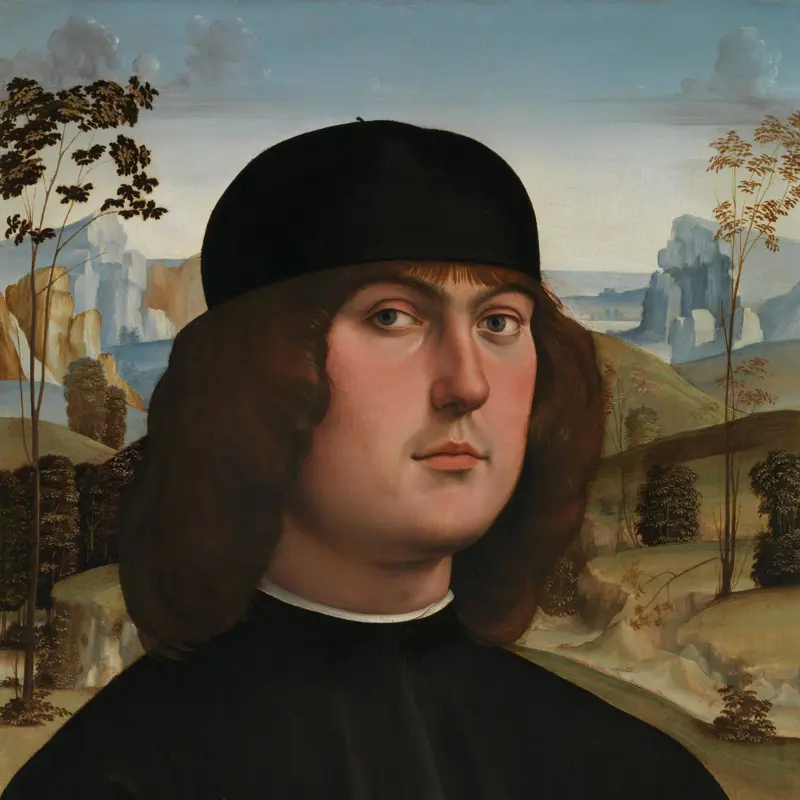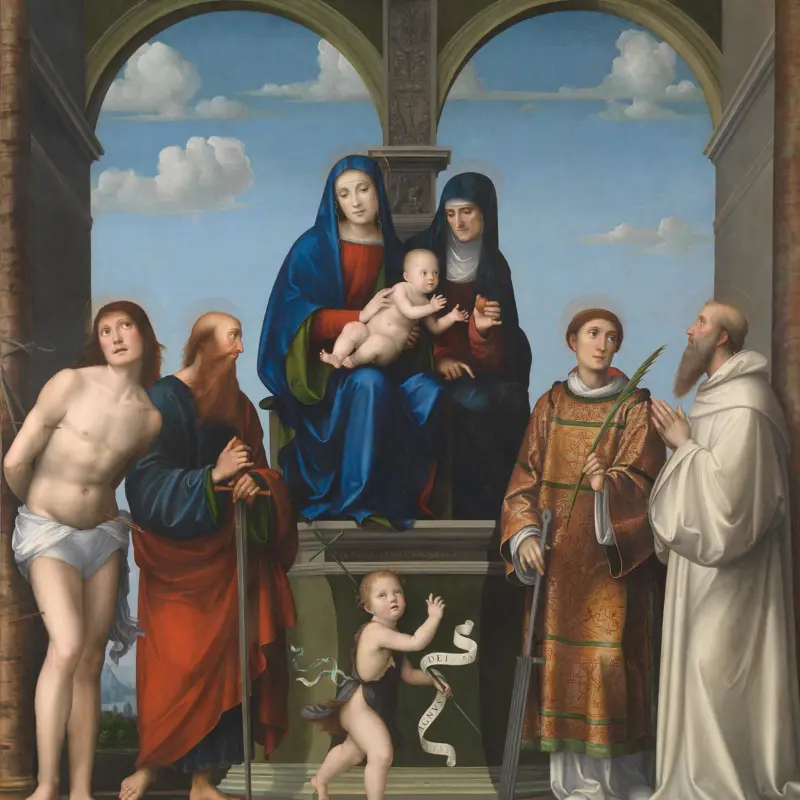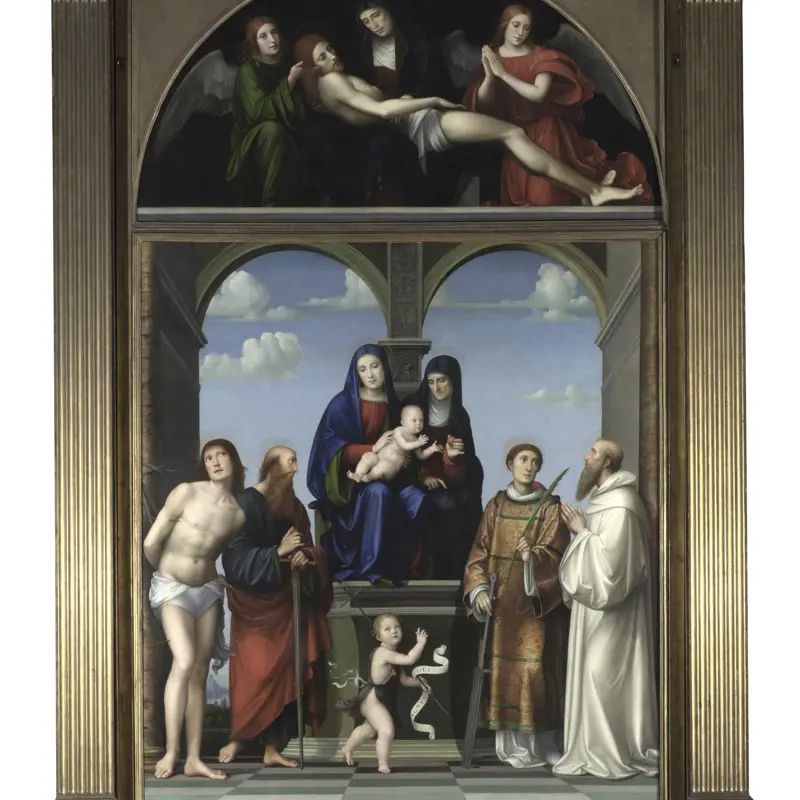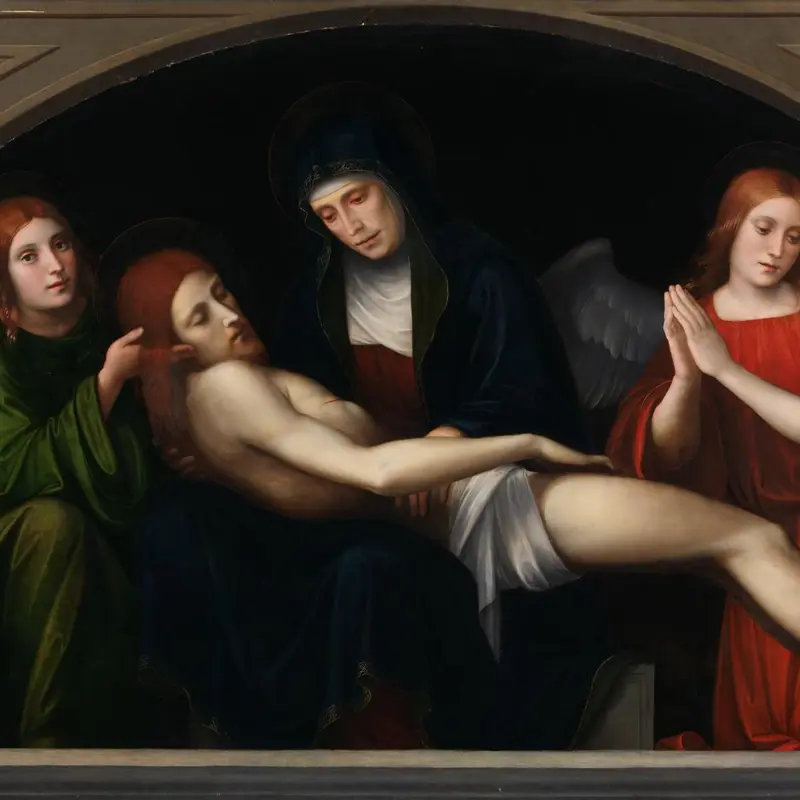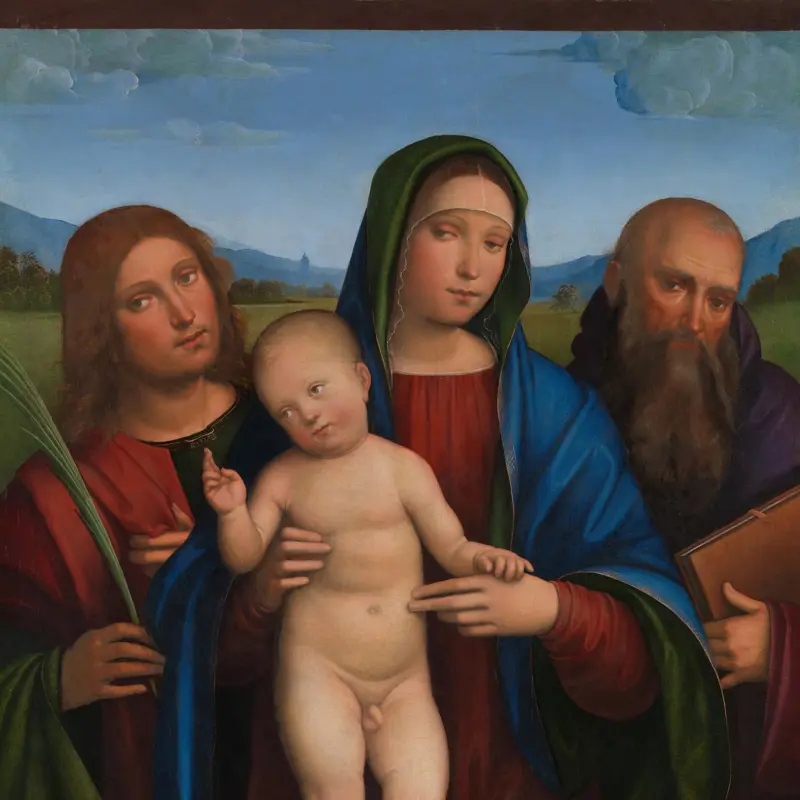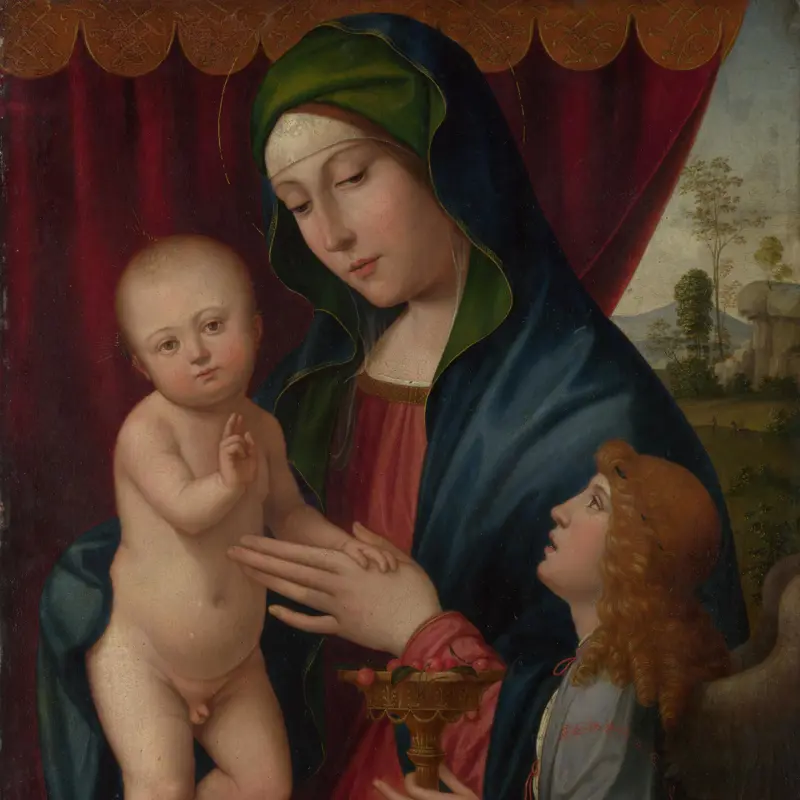Francesco Francia, 'The Lamentation over the Dead Christ', about 1515-16
About the work
Overview
After being taken down from the Cross, Christ’s body is laid outside the cave in which he will be entombed. Nicodemus or Saint Joseph of Arimathea kneels with his hands clasped in prayer while Saint John the Evangelist supports the body of the dead Christ. The Virgin Mary stands in a gesture of sorrow and Mary Magdalene holds Christ’s feet. Francia has devoted particular attention to the depiction of minute details, such as the figures' eyes, which are red with weeping, and the wounds on Christ’s forehead, caused by the crown of thorns he was made to wear when humiliated and crucified.
Francia painted the Lamentation on several occasions in different formats from predella panels to large altarpieces. It is possible that this painting was once a predella panel. The predella was the lowest part of a multi-panelled altarpiece (known as a polyptych) and would have been at eye-level when a worshipper was kneeling in prayer before the altar.
Key facts
Details
- Full title
- The Lamentation over the Dead Christ
- Artist
- Francesco Francia
- Artist dates
- About 1447 - 1517
- Date made
- About 1515-16
- Medium and support
- Oil on wood (probably poplar)
- Dimensions
- 30.5 × 34.3 cm
- Acquisition credit
- Salting Bequest, 1910
- Inventory number
- NG2671
- Location
- Not on display
- Collection
- Main Collection
- Previous owners
- Frame
- 20th-century Replica Frame
Provenance
The label and the double inscription on the back of the panel reveal the identity of two of its owners among the Neapolitan nobility: ‘sig. Principe di Cellamare’ is likely to be Giuseppe Giudice Caracciolo, 5th Prince of Cellamare, while ‘Francesco Filiasi’ must be the 5th Marquess of Carapelle (1869–1941), who married the prince’s daughter Maria Agata in 1898. The prince lent some of his paintings to the exhibition in Naples in 1877. Among these was a Pietà by Garofalo, which has been tentatively identified with NG 2617.
By 1901 the picture had passed into the hands of Ercole and Cesare Canessa. The Canessa were major dealers whose business was conducted in Naples, Paris and New York, and included antiquities, coins, ‘works of art’ as well as old master paintings. In 1901 they sold the panel to Colnaghi, who in turn sold a share to Bernard Berenson. Shortly after, in May of the same year, Colnaghi sold the Lamentation to George Salting. The latter lent it to the Burlington Fine Arts Club in 1902 (no. 20). The painting was acquired by the National Gallery with the Salting bequest in 1910.
Additional information
Text extracted from the ‘Provenance’ section of the catalogue entry in Giorgia Mancini and Nicholas Penny, ‘National Gallery Catalogues: The Sixteenth Century Italian Paintings’, vol. 3, ‘Bologna and Ferrara’, London 2016; for further information, see the full catalogue entry.
Bibliography
-
1951Davies, Martin, National Gallery Catalogues: The Earlier Italian Schools, London 1951
-
1986Davies, Martin, National Gallery Catalogues: The Earlier Italian Schools, revised edn, London 1986
-
2001
C. Baker and T. Henry, The National Gallery: Complete Illustrated Catalogue, London 2001
-
2016Mancini, Giorgia, and Nicholas Penny, National Gallery Catalogues: The Sixteenth Century Italian Paintings, 3, Bologna and Ferrara, London 2016
About this record
If you know more about this work or have spotted an error, please contact us. Please note that exhibition histories are listed from 2009 onwards. Bibliographies may not be complete; more comprehensive information is available in the National Gallery Library.

